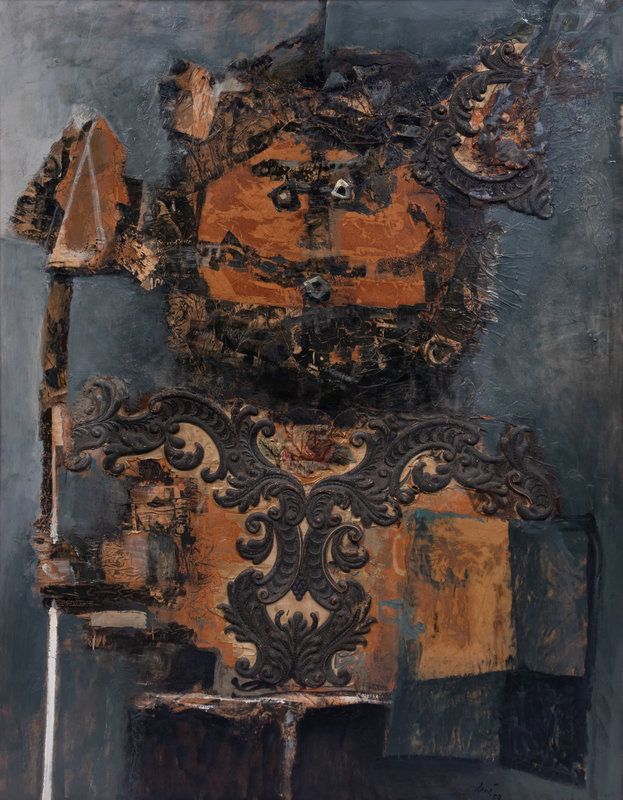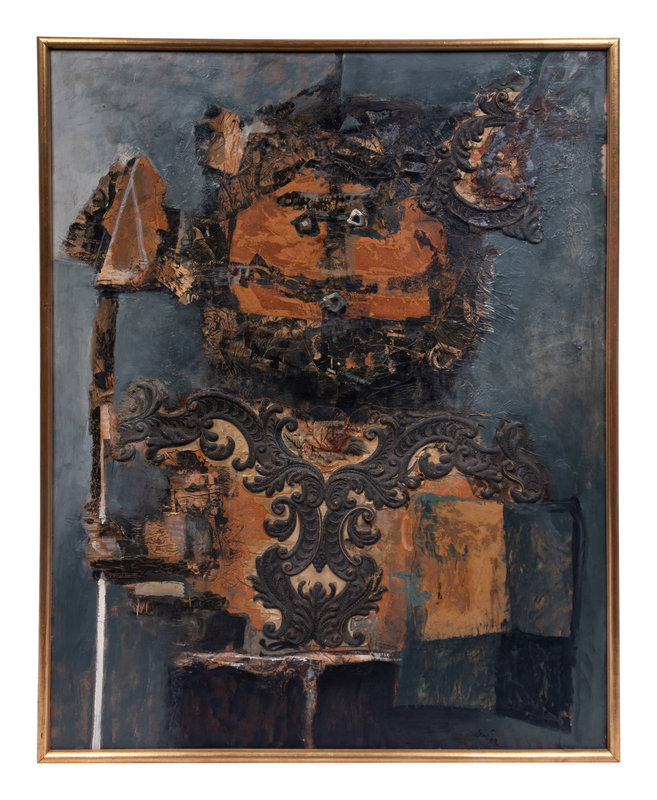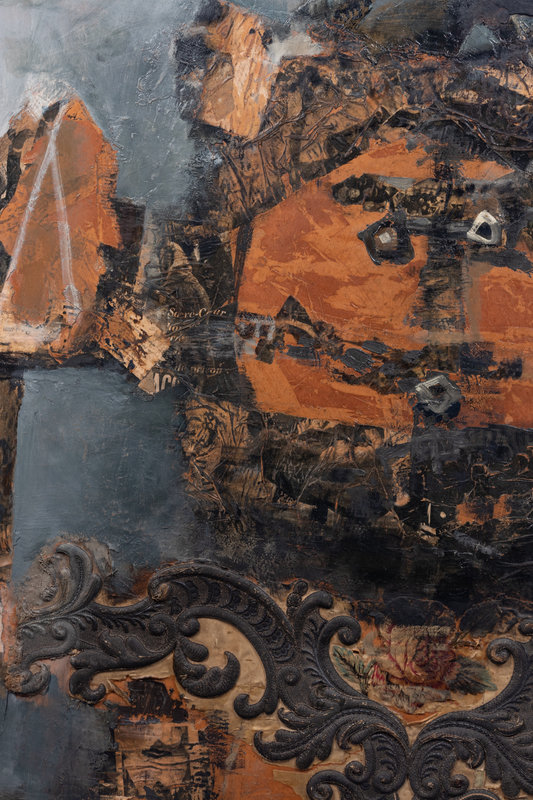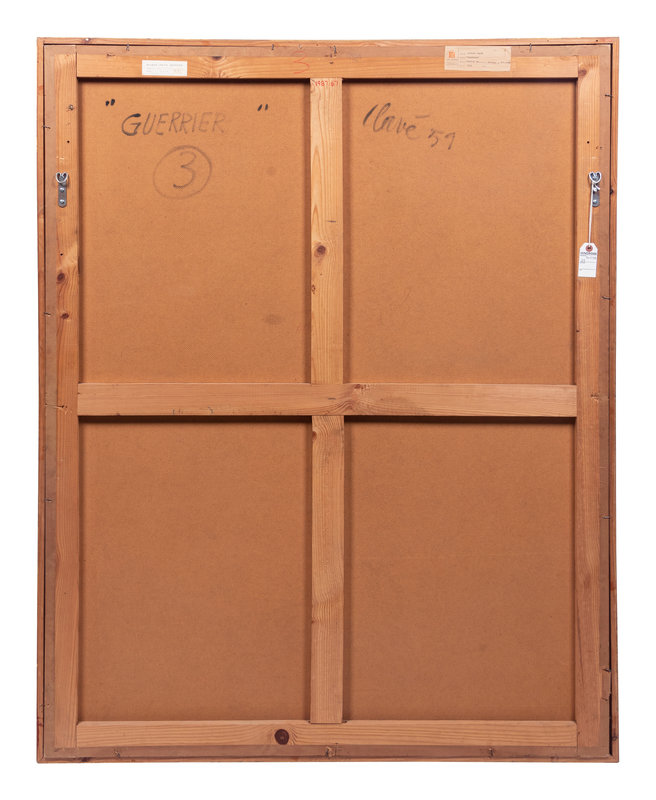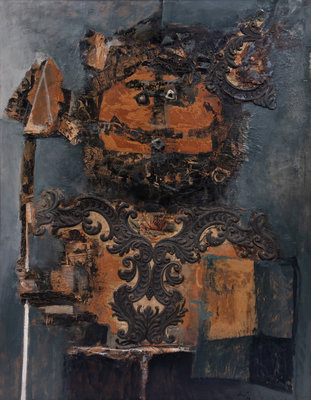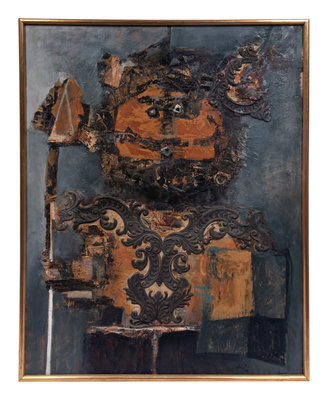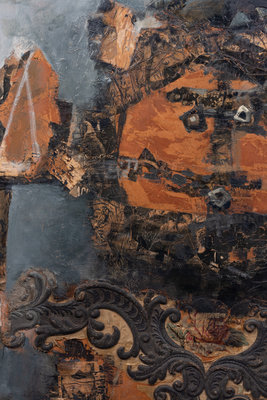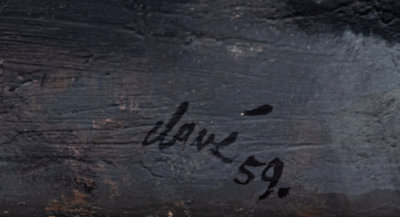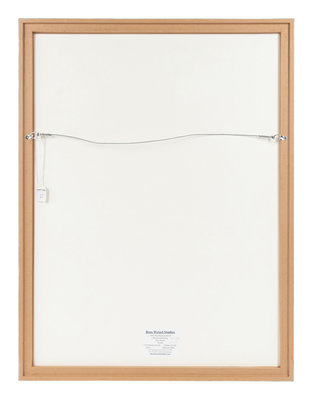Antoni Clavé
(Spanish, 1913-2005)
Guerrier
, 1959
Sale 1114 - Post-War & Contemporary Art
Dec 14, 2022
10:00AM CT
Live / Chicago
Own a similar item?
Estimate
$15,000 -
25,000
Price Realized
$37,500
Sold prices are inclusive of Buyer’s Premium
Lot Description
Antoni Clavé
(Spanish, 1913-2005)
Guerrier
, 1959oil and collage on board
signed Clavé (lower right); signed, titled, and dated (verso)
58 3/4 x 46 inches.
This lot is located in Chicago.
Sold to Benefit the Acquisition Fund of the Indianapolis Museum of Art at Newfields
Provenance:
Sala Gaspar, Barcelona, Spain
A Private Collection, Barcelona, Spain
Joseph Cantor, Carmel, Indiana
Daniel Cantor, Trustee of The Joseph Cantor Foundation, Indianapolis, Indiana
Exhibited:
Geneva, Switzerland, Museé Rath, Clavé, June 10 - August 13, 1961
Literature:
Museé Rath, Clavé: 25 ans de peinture, Ville de Genève, Switzerland, pp. 62, no. 95, illus.
Lot Essay:
Antoni Clavé and Historical Memory
Particularly clear in the two works by Catalonian artist Antoni Clavé (1913-2005) offered here is Clavé’s prioritizing of found objects and sources that play with the idea of historical memory. Both from the Indianapolis Museum of Art at Newfields, sold to benefit the Acquisition Fund, Guerrier (1959) and Empreinte No. 6 (1960) rely on collage and primitive mark-making to evoke a historical past.
Born and raised in Barcelona, Clavé had jobs in both a textile shop and as an apprentice house painter while young, while also taking art school night classes. He began working to create film posters for the facades of cinemas in Barcelona in 1932. After the Spanish Civil War broke out, Clavé joined the fight against Franco in 1937, making propaganda posters, until Barcelona was taken by the Nationalists and Clavé fled to France as a refugee where, until, after being interned in refugee camps along the French border, he arrived in Paris. Once in France, Clavé moved in artistic circles and often worked with fellow Spanish exiles to combat Franco from abroad, including Picasso.
In 1955-56, drawing from real and fictional figures for pastiche, Clavé began what would be one of his most well-known series, Rois et Guerriers (Kings and Warriors), to which Guerrier (1959) belongs. Through Clavé’s wistful and comical characterization here, the traditional knight of Guerrier (1959) becomes Don Quixote, nostalgic for a Spain past.
Clavé began to include collage into his painting practice in 1956 and utilized collage here.[i] Set in a shallow background of blues and grays, the knight, in oranges, grays, and blacks and made up of paint and collage, including torn newspapers, is in three-quarter view. The knight has a helmet and breastplate made with three-dimensional ornamentation and embossing while he holds a spear at attention in his right hand. In his left hand is a shield that also reads as an open book, facing the viewer. There is a rose—a Romantic touch--, in streaks of red with green-tinted leaves, right above the center of the breast-plate. Influenced throughout his career by African masks, the painted facial features of Clavé’s warrior are child-like-- eyes and mouth in open O’s while the mustache and eyebrows are painted in long swathes of black.[ii]
Aude Hendgen, the head of the Antoni Clavé Foundation has noted that Clavé’s Guerriers are “hardly frightening” since they usually are mutilated in some way.[iii] Indeed, with his weapon pointed up and cut off at the knees this warrior does not pose a real threat. Rather, like others of the warrior series according to Hendgen, Clavé “creates a work that does not answer any order, a reflection through the distancing, combined of the form, oil and collage of torn and roughly sewn canvases and the background.”[iv] Here, more specifically through the historic and Romantic elements of antiquated armor, rose, and book-shaped shield on a particularly befuddled knight, embody the Don Quixote of Spanish tradition, rendered inert. This interest in the survival of historical memory—even if, in the case of the warrior, greatly diminished--is also clear in his sculpture made a year later: Empreinte No. 6 (1960.
This work is a metal bas relief of different figures and shapes, presented on red velvet like a museum specimen. The small man in the middle left, defined not dissimilarly to the Guerrier out of squares with child-like touches of beady eyes and swoop of mustache are reminiscent of cave drawings. Purposefully rusted in certain patches, with craters and crevices, and jagged edges throughout, the work has the impression of having been exposed to the elements, dug up. Taken as a whole, the sculpture gives the impression of an archaeological find, an empreinte (footprint) of a past civilization.
As Pierre Daix described of Clavé’s output in his 2001 book on Clavé’s assemblages: “The act of cutting out, of tearing, that of gluing, that of arranging and that of wielding a paintbrush or a pencil all take part in the same enterprise, that gathers up something that has been seen, something that has been left behind, some such fleeting encounter of images. There is first of all the unity of creation.”[v]
Through his methodology of combining a variety of materials, including found objects, and evoking historical and fictional sources, Clavé’s works, particularly the two offered here, resonate with the viewer through their reflection of a shared cultural memory.
Bibliography:
Antoni Clavé Foundation.“Eco.” Accessed November 9, 2022. https://www.antoni-clave.org/en/art/eco/.
Corredor-Matheos, José. “Antoni Clavé: Observing and Reaching the World.” In Antoni Clavé: l’esprit du Guerrier, edited by Aude Hendgen and Sitor Senghor, 172-187. Milan: Silvana Editoriale S.p.A, 2022.
Hendgen, Aude. “A View of African Art. The Spirit of the Warrior in the Art of Antoni Clavé.” In Antoni Clavé: l’esprit du Guerrier, edited by Aude Hendgen and Sitor Senghor, 24-51. Milan: Silvana Editoriale S.p.A, 2022.
[i] José Corredor-Matheos, “Antoni Clavé: Observing and Reaching the World, in Antoni Clavé: l’esprit du Guerrier, ed. Aude Hendgen and Sitor Senghor (Milan: Silvana Editoriale S.p.A, 2022), 179.
[ii] Aude Hendgen, “A View of African Art. The Spirit of the Warrior in the Art of Antoni Clavé,” in Antoni Clavé: l’esprit du Guerrier, ed. Aude Hendgen and Sitor Senghor (Milan: Silvana Editoriale S.p.A, 2022), 29.
[iii] Ibid., 42-43.
[iv] Ibid., 45.
[v] Antoni Clavé Foundation,“Eco,” accessed November 9, 2022, https://www.antoni-clave.org/en/art/eco/.
Condition Report
Auction Specialist
